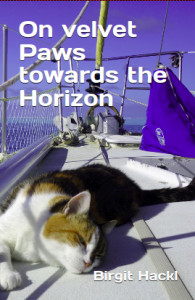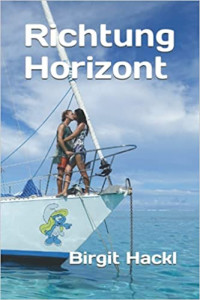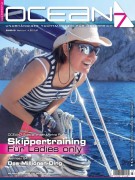Raivavae’s a small island, the coastal road that goes all around is only 23 km long. There are two ‘route traversiere’ (paths across from north to south) and we walked both of them last week. The tracks lead up the ridge through lush vegetation, large taro fields and countless banana plantations (who can eat so many bananas??). The scenery resembles the Society Islands and so does the ‘Ia orana’ the friendly locals shout out from their gardens. Down on the coastal road again we walked along the southern coast past little houses with manicured gardens and nice views of the narrow lagoon and the motus on the barrier reef. We had hoped to hitch a ride back to Rairua, but the only vehicles that passed us were bicycles, even though we saw cars next to most of the dwellings, so we walked all the way to the eastern cape and then along the northeastern coast, where the cliffs of the mountains ridge rise vertically skywards.
We had heard that it was possible to hike up to Mount Hiro (the highest mountain) from that side and after admiring the stunning view, decided to inquire about the path at the first house we saw a man mowing the lawn. The answer was a simple ‘oui’ and a big grin. Did he know where exactly the path started? Yes, here! What, in this village? No, right here! With an even wider grin he showed us around the house where a narrow footpath leads into the thicket. What a coincidence that we asked at exactly the right house… We’ll return next week for this rather ambitious hike.
Now it’s the weekend and we expected the same hustle and bustle that we’re used to from the Gambier, where fishing boats zoom out into the lagoon, children jump from the dock, youngsters plays loud music from their cars, families spend the day sunbathing and swimming on the village beach or take picnics out to the motus and the smell of BBQ hangs in the air. But nothing like that is happening here. It’s almost creepy quiet, only the sound of church bells breaks the silence–numerous denominations fight for the souls of the few islanders here… French cruisers who have spent the cyclone season here, just told us that it’s even forbidden to take a boat out into the lagoon on Sundays.







